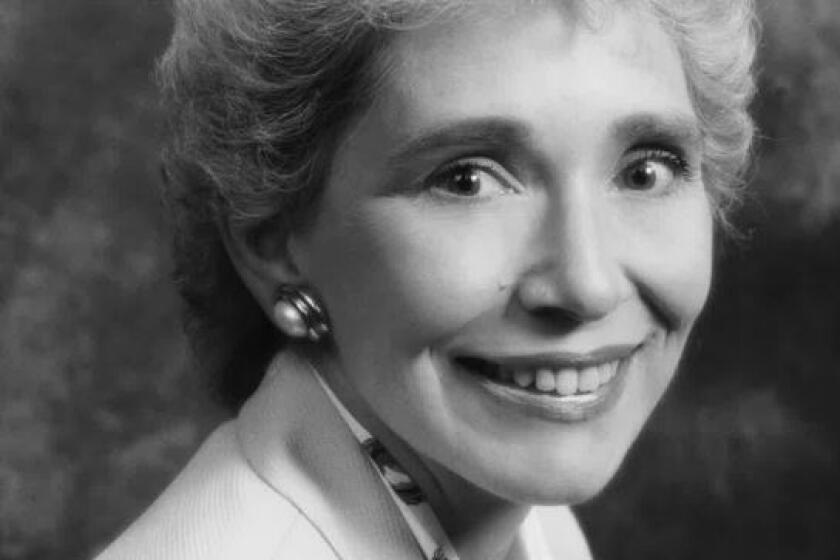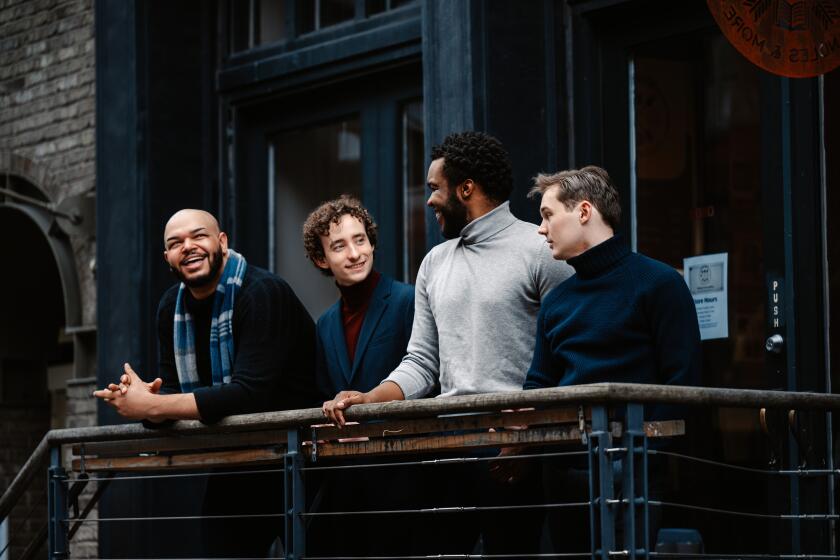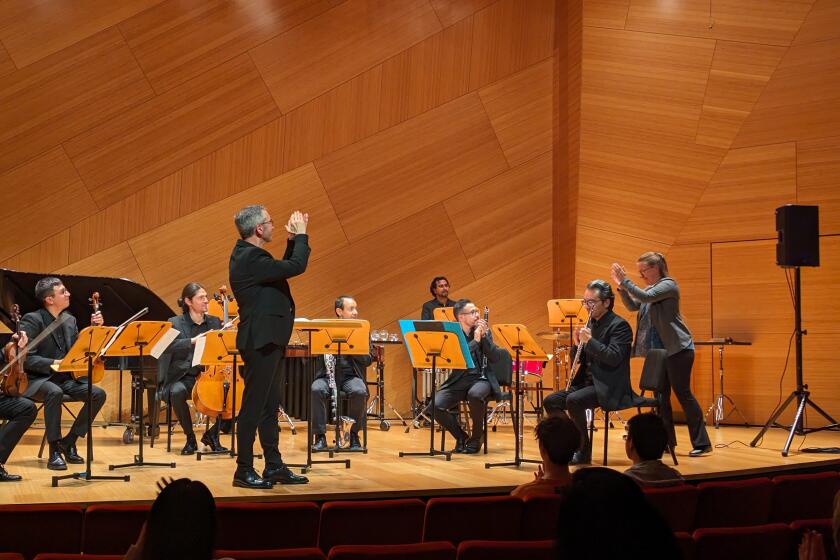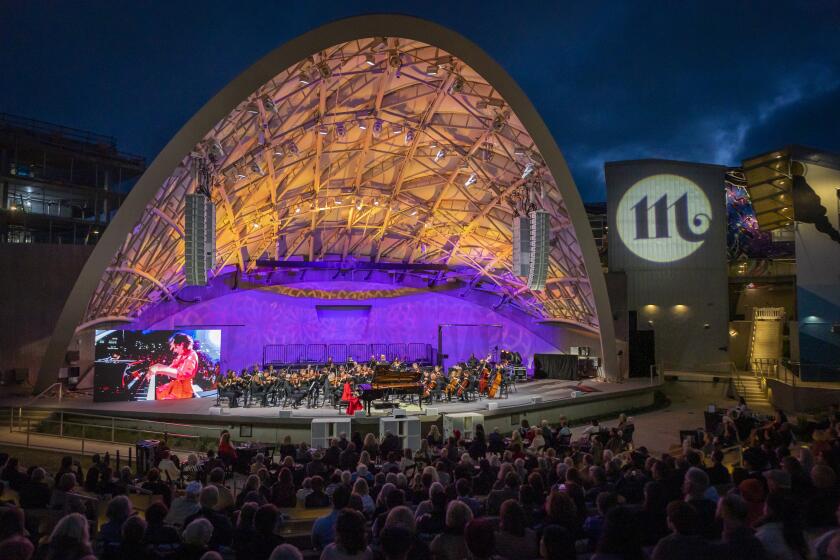Review: New trumpet concerto by Gabriela Ortiz wows San Diego Symphony audience
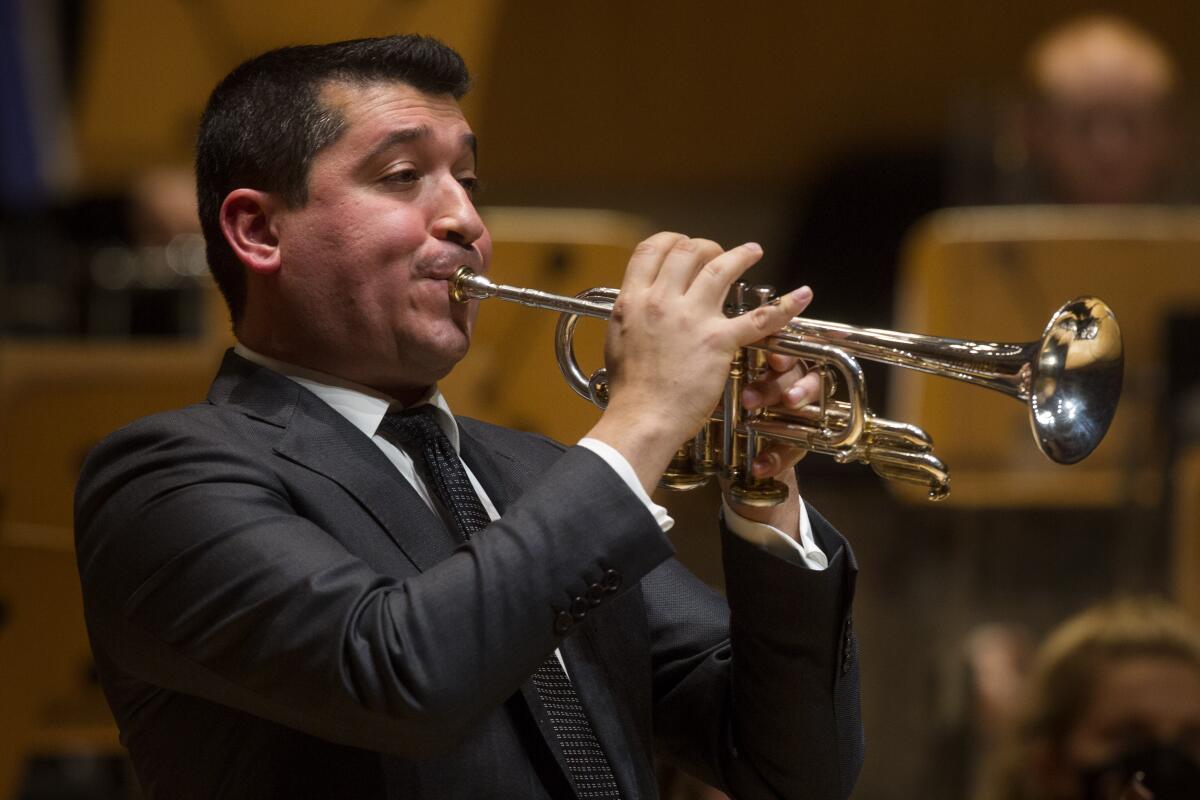
Thrills with trumpeter Pacho Flores, conductor Rafael Payare, and the San Diego Symphony
The audience at Mandeville Auditorium saw something strange Thursday evening. Soloist Pacho Flores strode on stage in front of the San Diego Symphony, perilously carrying two trumpets and a cornet.
Following Flores was conductor Rafael Payare, bearing a flugelhorn.
Flores and Payare got off easy, according to Mexican composer Gabriela Ortiz, whose “Altar de Bronce” (Bronze Altar) was given its West Coast premiere at the concerts. In a brief talk, she related how Flores played 20 of his instruments for her initial consultation with him, an experience she described as “overwhelming.”
All four brass instruments were put to exceptional use in Ortiz’s work on Thursday. An astounding virtuoso, Flores agilely played runs and held brilliant high notes.

“Altar de Bronce” was co-commissioned by the San Diego Symphony. It was one continuous movement lasting about 20 minutes. At times harmonies were clearly tonal, at others piquant dissonances sounded over dominant seventh rhythmic grooves.
Flores requested that Ortiz write something “Latin.” She responded with a final section flavored by cumbia and mambo music. To highlight that final part, Flores yelled out “MAMBO!” (not called for in the score) and as he played, he swayed in rhythm to the boisterous accompaniment.
Flores is a proficient improviser, so Ortiz left him passages to fill in as he liked. A long cadenza near the end saw him kissing through his trumpet at Payare, belching humorous low notes, and inviting the audience to clap along with him as he wrapped up his solo.
Payare and the orchestra were passionate accompanists, supplying echoes of Flores’ part or laying down rowdy grooves.
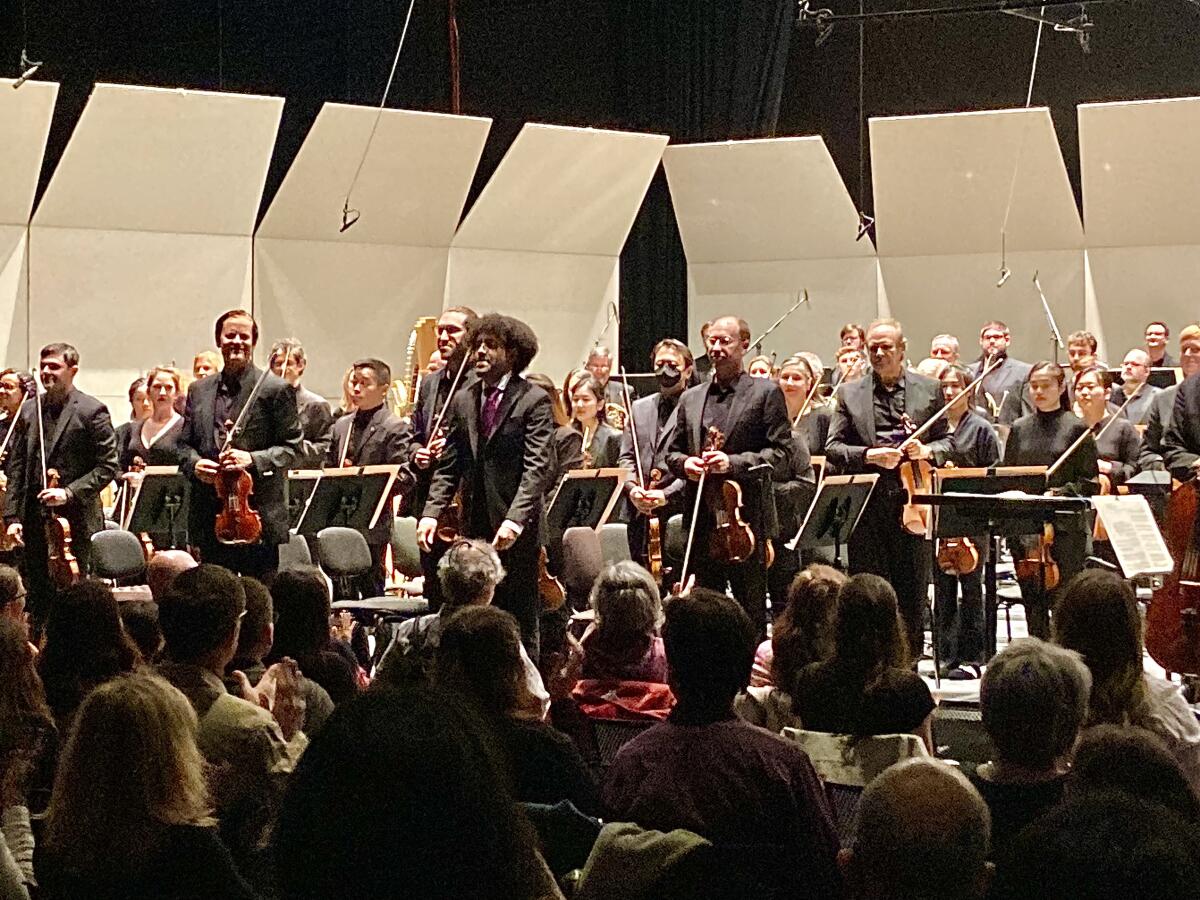
The crowd cheered Flores, Payare, and Ortiz. Flores and Payare re-emerged before the applause died down to play an unannounced arrangement of Astor Piazzolla’s “Revirado.”
The rest of the program, like so many this season, was larded with early 20th-century sonic spectacles. Payare obviously had hoped to show off the acoustic improvements at Copley Symphony Hall, but it stubbornly remains under renovation.
When writing about the acoustics of Mandeville Auditorium after its tune-up a few years back, I’ve been downright mean. I owe UC San Diego an apology. When an excellent ensemble like our current San Diego Symphony fills the space, it’s an obvious improvement over the pre-pandemic hall.
Ravel’s Suite no. 2 from “Daphnis et Chloé” usually closes concerts, but it made a magnificent opener, particularly with the beginning “Lever du jour,” that most wonderful of all musical sunrises. Rose Lombardo’s suave flute was a delight to hear in the Pantomime. While the wordless chorus was left out, eight percussionists (plus timpanist) were there for the grand conclusion.
I hope that Payare will program the full ballet — with chorus — when the Symphony is back in its hall. This gorgeous performance was a tantalizing appetizer for that possibility.
Ravel’s “Le Tombeau de Couperin” received a bracing rendition, with the first movement taken particularly fast. The fiendishly difficult oboe part was flawlessly and crisply executed by Sarah Skuster. In its later movements her contributions and those of Andrea Overturf’s English horn were superb.
An outstanding performance of Debussy’s “La Mer” closed the concert. This was a turbulent “La Mer,” one that savored Debussy’s subtle orchestrations, but also surged ahead with unstoppable momentum. In the second movement, lines seamlessly passed from one section to another.
The end of “La Mer” is one of the most exciting orchestral moments from the early 20th century. Payare and the musicians built up a tremendous tension that thrillingly exploded, an excitement that caused the audience to leap to their feet with wild approval.
Hertzog is a freelance writer.
Get U-T Arts & Culture on Thursdays
A San Diego insider’s look at what talented artists are bringing to the stage, screen, galleries and more.
You may occasionally receive promotional content from the San Diego Union-Tribune.
